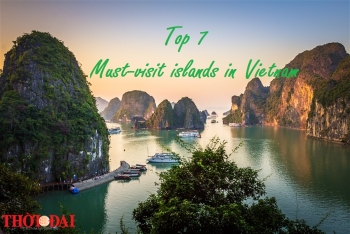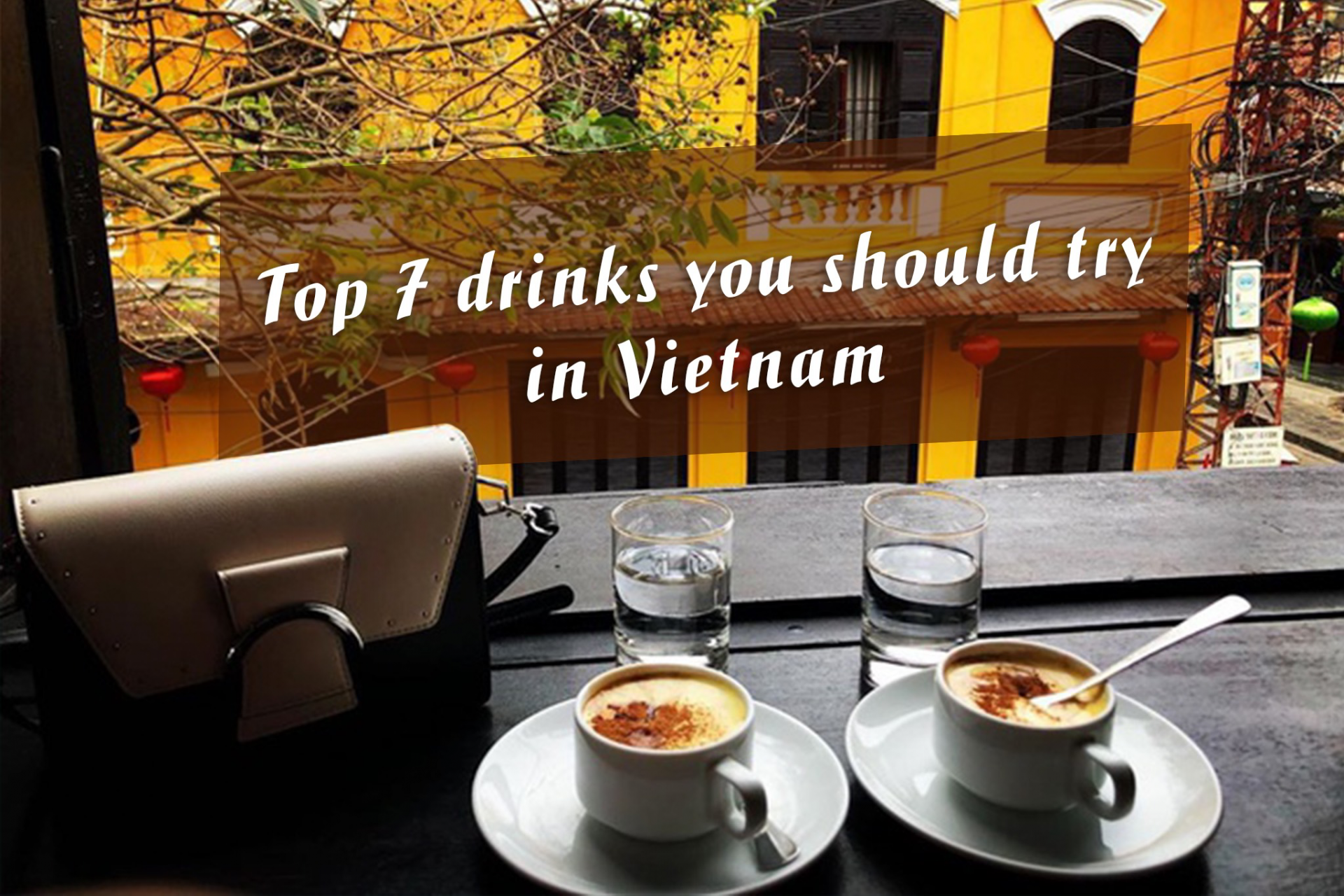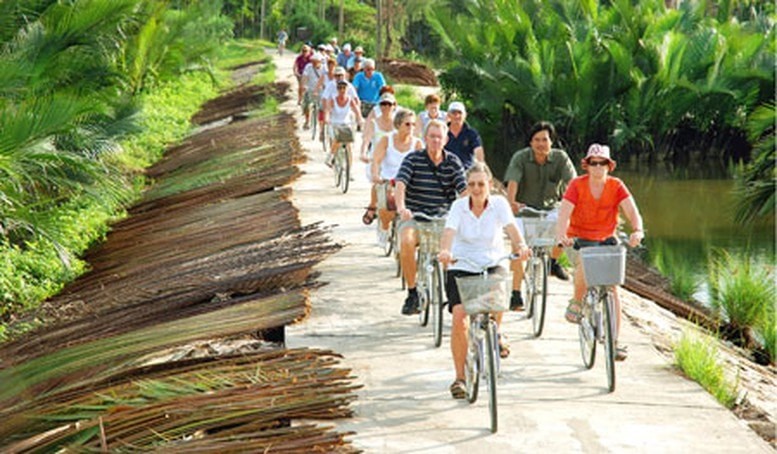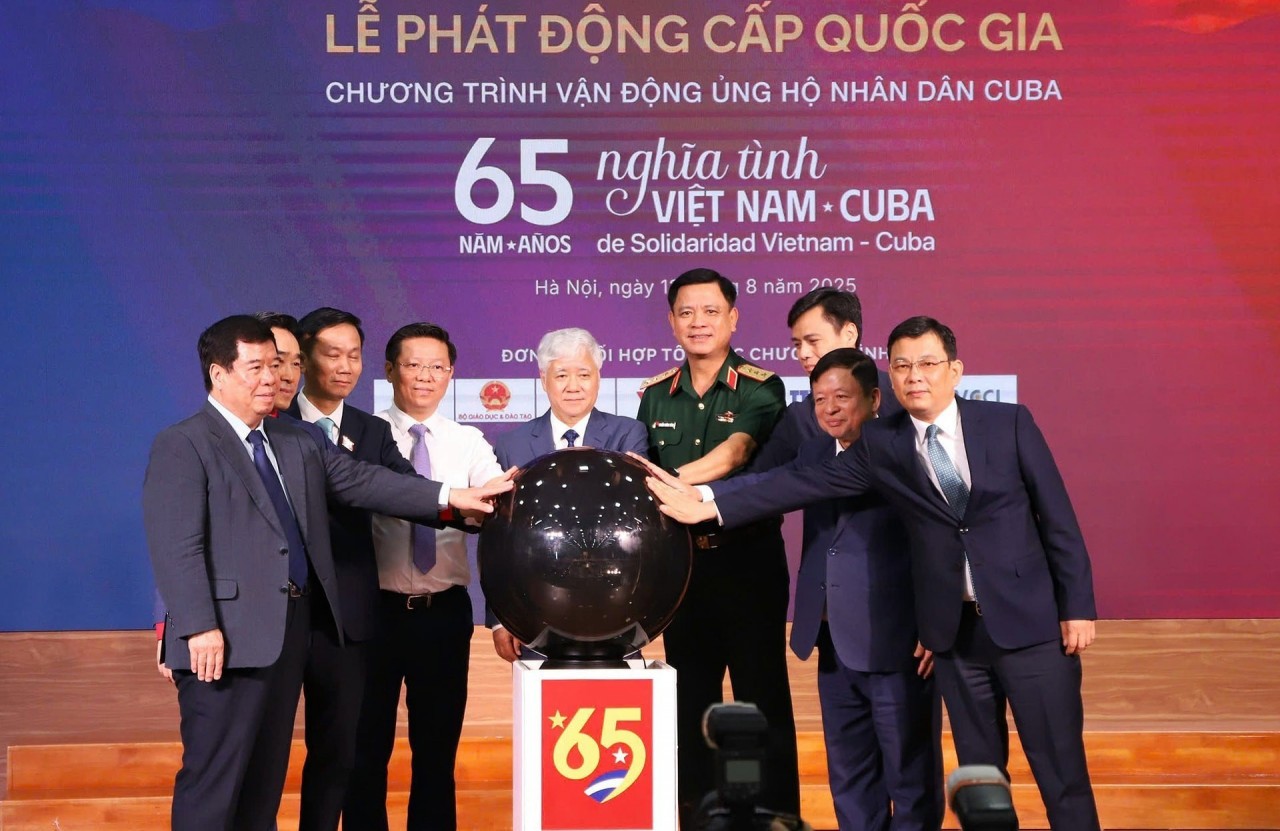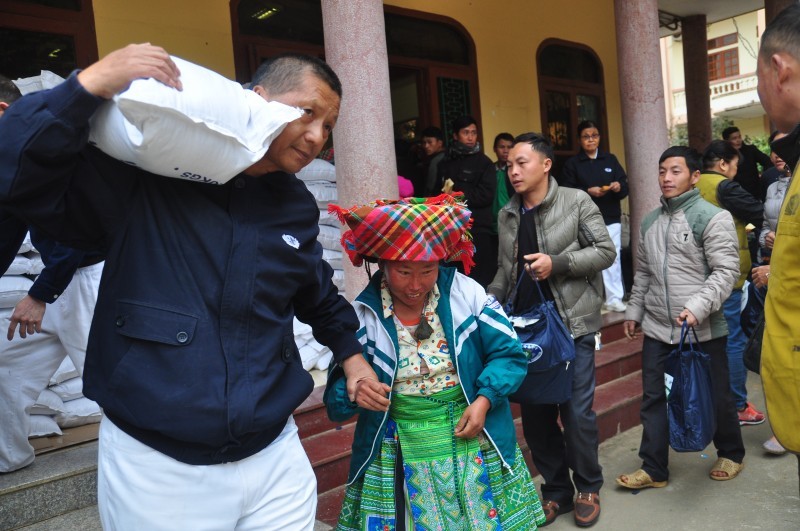Top 7 Most Beautiful Rivers in Vietnam
| Top 7 most beautiful cathedrals in Vietnam | |
| Top 7 Must-Visit Islands in Vietnam | |
| Top 7 Best Drinks in Vietnam - Video |
Indeed, Vietnam is the country of legendary rivers, which have accompanied the life of Vietnamese for more than 4000 years and witnessed the ups and downs of history.
From north to south, there are 2,360 more-than-10-kilometer rivers with the total length up to 41,900 kilometers, forming fertile deltas on the catchment areas of the rivers. Not only that, the traditional features of Vietnamese culture are nourished and preserved in the peaceful villages as well as the bustling cities on the riverbanks.
Coming to each river, you will have an opportunity to contemplate the stunning scenery along the river, listen to the legend from the local residents and experience the exclusive cultural traits. If the limited time does not allow you to explore all the beautiful rivers in Vietnam, how about considering the top 7 most beautiful rivers in Vietnam on the list below?
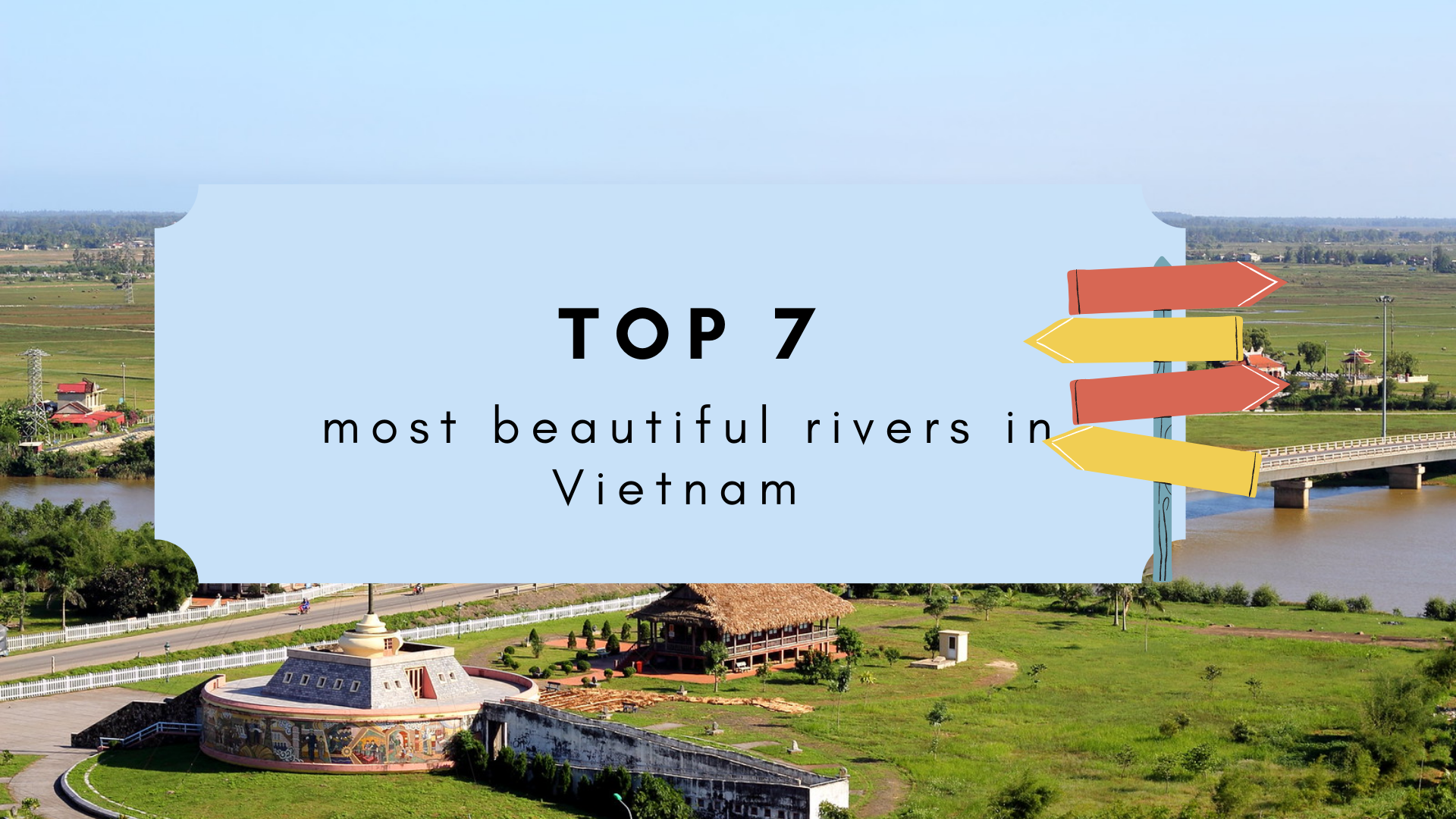 |
| Photo: Phong Nha Explorer |
List of top 7 most beautiful rivers in Vietnam
1. Mekong River
2. Saigon River
3. Perfume River
4. Ngo Dong River
5. Nho Que River
6. Ben Hai River
7. Serepok River
1. Mekong River
 |
| Photo: Britannica |
Mekong River is the largest river in Southeast Asia flowing in Vietnam territory. The river comes through Southwest Region with two major tributaries, which is Tien River and Hau River, then joins The East Sea in nine estuaries, therefore, it is also called Cuu Long River. The total length of Mekong River in Vietnam is about 500 kilometers, with the catchment basin of nearly 71,000 square kilometers, which takes up about more than 8% of the total basin area of Mekong River. In the Southwest Region, people built a canal network for providing water to all the provinces in the delta.
Mekong Delta in Vietnam is not only well-known for its peaceful and multi-colored life but also the exclusive floating markets, which is a part of the culture there, with rustic bamboo boats and plentiful commodities. When coming to Mekong River, there are a variety of floating markets that you should visit at least once such as Cai Rang (Can Tho), Long Xuyen (An Giang), Cai Be (Tien Giang) and Phung Hiep (An Giang). In addition, you should not miss the chance to explore the biodiversity in Southeast Region in Tram Chim, U Minh Thuong and U Minh Ha National Park.
2. Saigon River
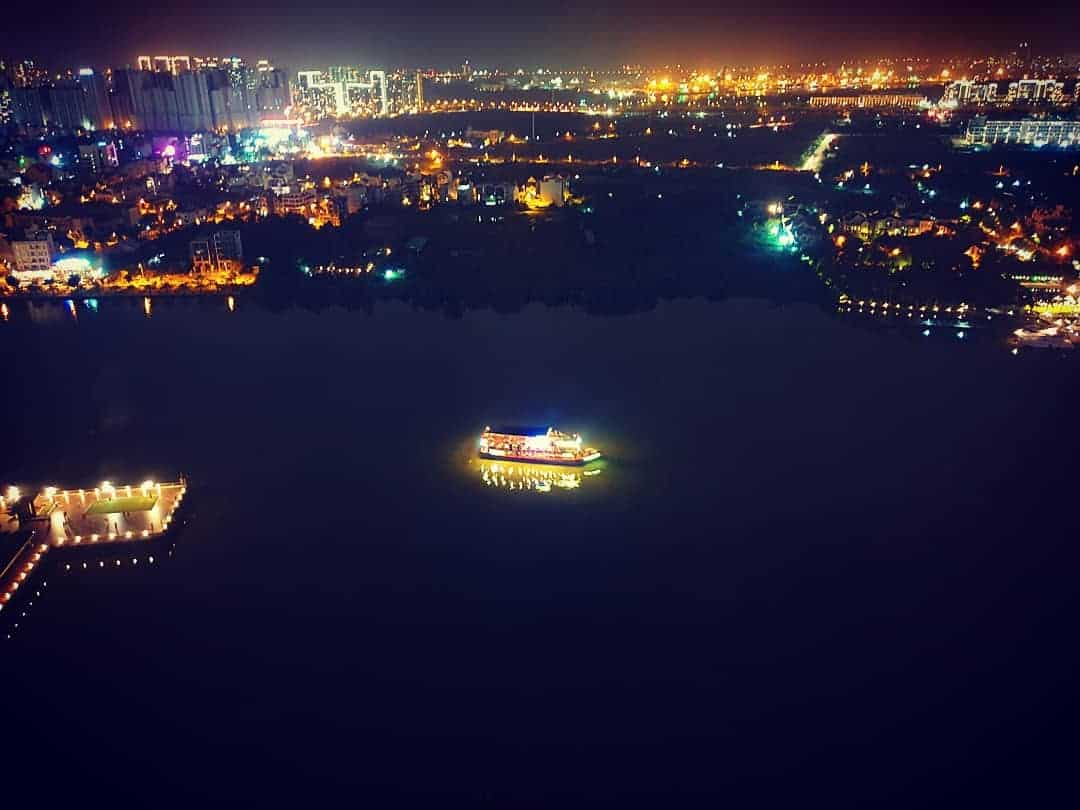 |
| Photo: Vietnam Travel Discovery |
While most rivers in Vietnam have an attachment to the images of traditional and natural beauty, Saigon River is one of the exceptions. When it comes to Saigon River, many people will immediately bear in their mind an image of a modern and bustling city, a Far-East pearl as French called, which is Ho Chi Minh City. Saigon River is a branch of Dong Nai River, and also one of the two rivers flowing through Ho Chi Minh City. Through the more-than-300-year history of this city, Saigon River has witnessed the rise and fall of Saigon, in order that today, we can see a vibrant and dynamic city on the two sides of this river.
Visiting Saigon River, you can take a Saigon Water Bus at Bach Dang Port to contemplate the stunning view of Ho Chi Minh City. The river winds through towering buildings, crowded residential areas and busy streets, takes visitors to visit the symbolic construction of Ho Chi Minh City such as Nha Rong Harbor, Bitexco Tower and Landmark 81, the highest building in Vietnam. When the night falls, you can have a walk in the riverside park, seeing a sparkling city with colorful lights reflecting on the water of Saigon River.
3. Perfume River
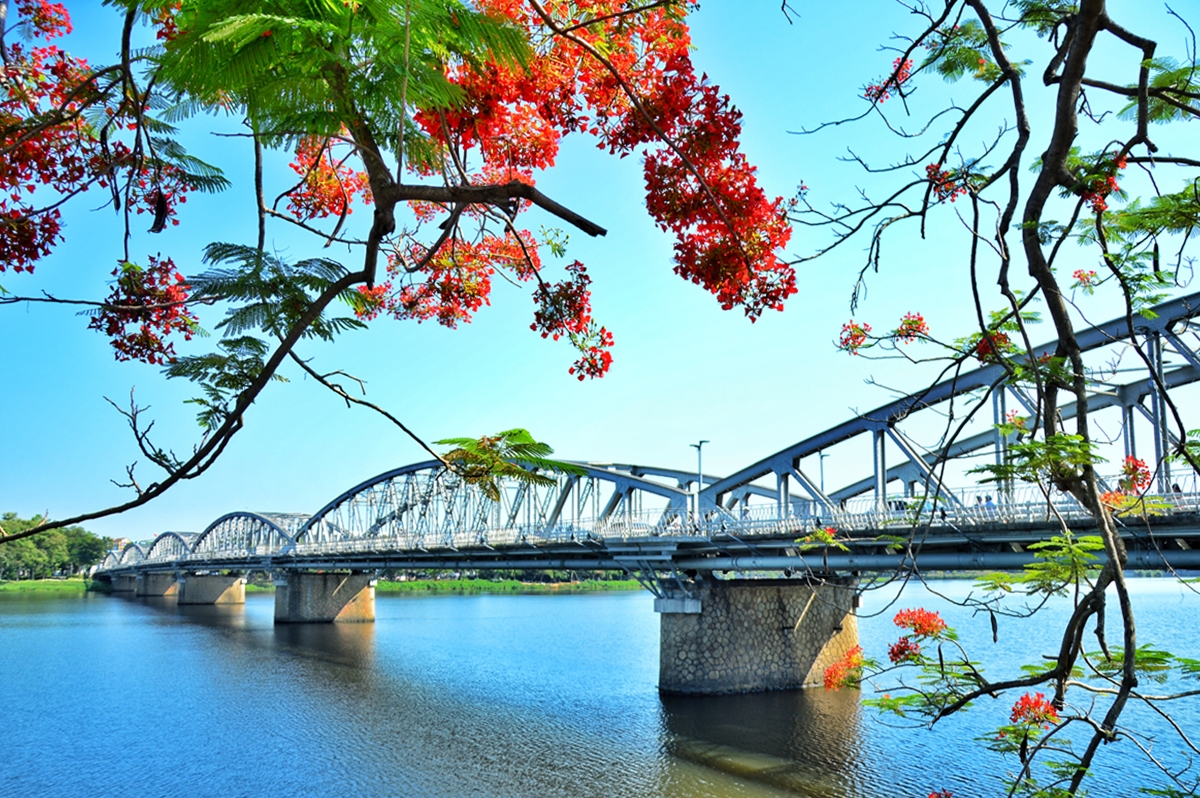 |
| Photo: VnExpress |
Situated in Hue Imperial City, Perfume River is one of the most famous rivers in Central Vietnam. The river spans approximately 80km in length, flowing from Truong Son Mountain through Hue City Centre and Bang Lang Fork, running through many rustic villages in Hue like Kim Long, Nguyet Bieu, Vy Da, Dong Ba, Gia Hoi, Cho Dinh, Nam Pho, and Bao Vinh. The river had its name over 100 years ago, from the scent of flowers that bloom along the river’s banks in the autumn and drop in the water from upriver orchards, giving a strong fragant aroma to the river.
In terms of Hue’s architecture in the past, Perfume River was considered as the natural trench to protect the ancient capital from the King Kim Long (1630 – 1687) to King Phu Xuan (1687 – 1712). Morever, the river strongly associates with Hue local cultural life. All forms of traditional culture such as Ca Hue (Hue traditional folk song), rowing boat racing are still intact until now. The river is also the main inspiration for many artists to compose famous poems, songs and pictures. Together with Ngu Binh Mountain, Perfume River is the symbol of Hue’s endless beauty and culture.
4. Ngo Dong River
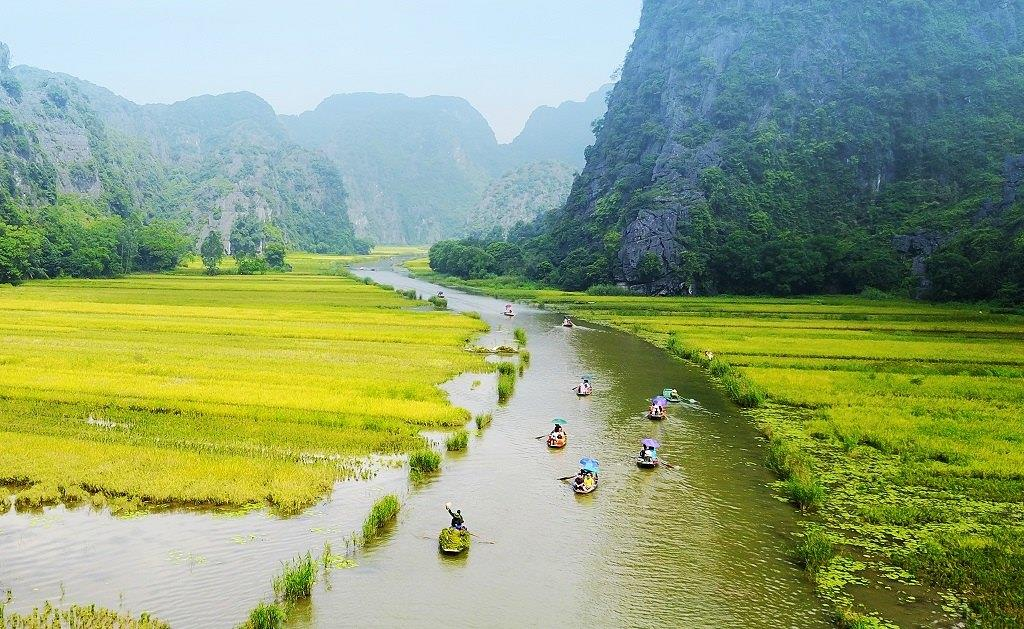 |
| Photo: Vietravel |
When thinking about a day trip to Ninh Binh from Hanoi, the first thing comes in every tourist’s mind must be the two hour rowing boat ride in Tam Coc along Ngo Dong River. Ngo Dong River is a small one in Ninh Hai Commune, Hoa Lu District, Ninh Binh – an attractive tourist destination in the North Vietnam. The river flows from the low area in the heart of limestone mountains of Trang An Landscape Complex World Heritage, creeps through mountains cliffs and rice fields. Ngo Dong River – the name itself brings a very romantic sentiment and makes us curious to find out its meaning. The end of May and the early of June is the time of rice harvesting season. At this time, the rice fields spreading along the river’s banks turn into yellow, dye the river into the golden color as the color of maize. Therefore, the name Ngo Dong (translated as Corn Field) was used to call this poetic river. In the sunny days, the river reflects the sunshine that make the scene become more sparkling than ever. To behold this river in its ultimate charming beauty, just challenge yourself by overcoming 486 stone steps to the peak of nearby Mua Cave. From this viewpoint, you can have a most realistic and vivid panoramic view of rowing boats running leisurely along the river, the two riversides with fragrant ripen yellow rice fields and surrounded by majestic limestone mountains. This wonderful picture will surely captivate your heart and become an unforgettable impression on your travels.
5. Nho Que River
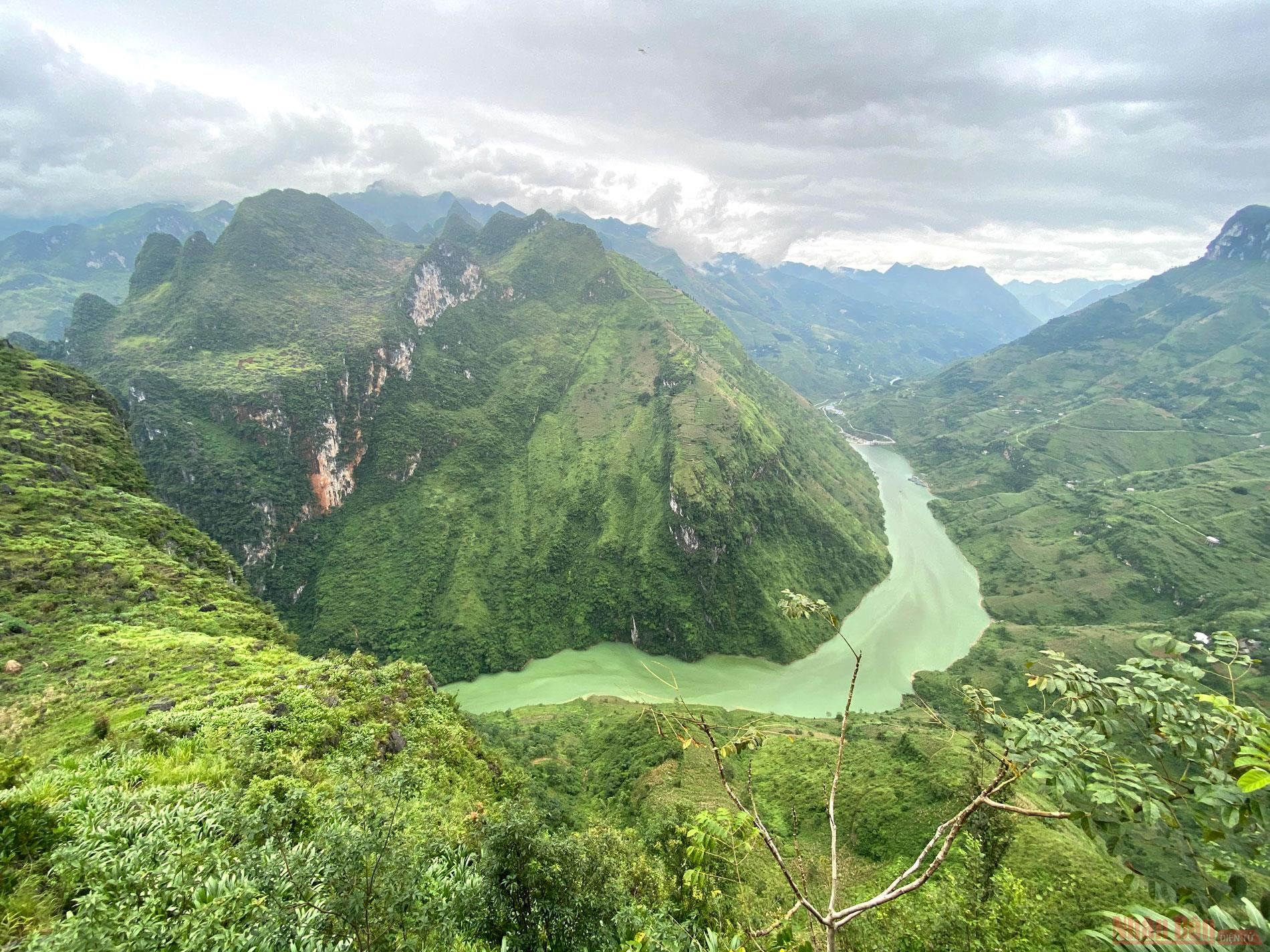 |
| Photo: Nhan Dan |
Coming to Ha Giang Province, a mountainous landscape in North Vietnam, besides the notoriously spectacular passes attracting all the backpackers, you will be introduced to a specific river on a ravine – Nho Que River. This river starts from China, flows in the southeast direction into Vietnam territory. Although a part of this river is also in Cao Bang Province, the first part of Nho Que River in Lung Cu Commune, Ha Giang Province is considered as the most breathtaking scenery. Previously, the Nho Que River was not quiet as it is at the moment; it was not until a dam in a hydroelectric project that Nho Que River became more smooth.
To admire the whole beauty of Nho Que River, many tourists choose to stand on the top of Ma Pi Leng Pass, a 20-kilometer favourite pass of all travelers in Ha Giang. Ma Pi Leng Pass is known as a road full of obstacles with high and dangerous sheer rock perched in one side, and deep abyss in the other side. From this pass, you can draw your attention to the majestic view of Tu San Alley, where the blue water of Nho Que River is flowing slowly, curving round the towering cliffs. In addition, you can join a boat trip on Nho Que River, look up to contemplate the soaring cliffs, touch the blue and chilly water of Nho Que River and immerse yourself in the atmosphere of mountains, water and cloud.
6. Ben Hai River
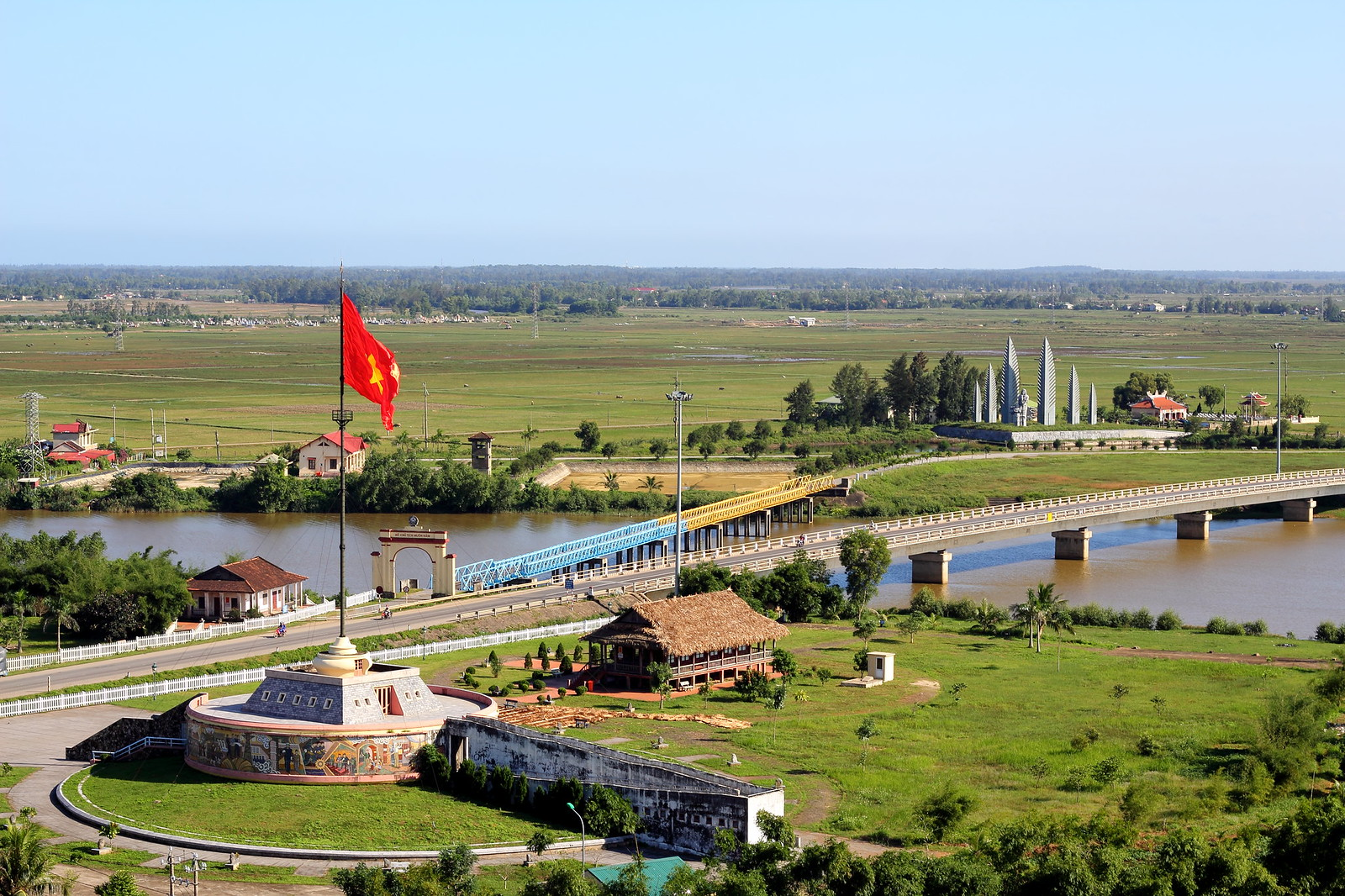 |
| Photo: Phong Nha Explorer |
Despite of not being one of the most famous rivers in Vietnam, Ben Hai River in Central Vietnam is best known for its historic meaning as the boundary that separated two parts of Vietnam during the Vietnamese – American War: the North was controlled by the Democratic Republic of Vietnam and the South was under the management of the Republic of South Vietnam. At the Geneva Conference in July 1954, agreements were made that the French would withdraw their troops from northern Vietnam and the country would be divided in two until elections, at which time a president would be decided and the country reunited. The boundary was the Ben Hai River, which runs along the 17th parallel, with a five kilometer buffer extended on either side becoming the demilitarized zone (DMZ). In that instant, families and loved ones were physically divided. It was an important step towards a bloody war that would tear the country apart. (The elections never happened.) The division last for 21 years along with the great struggle of Vietnamese for national reunification.
7. Srepok River
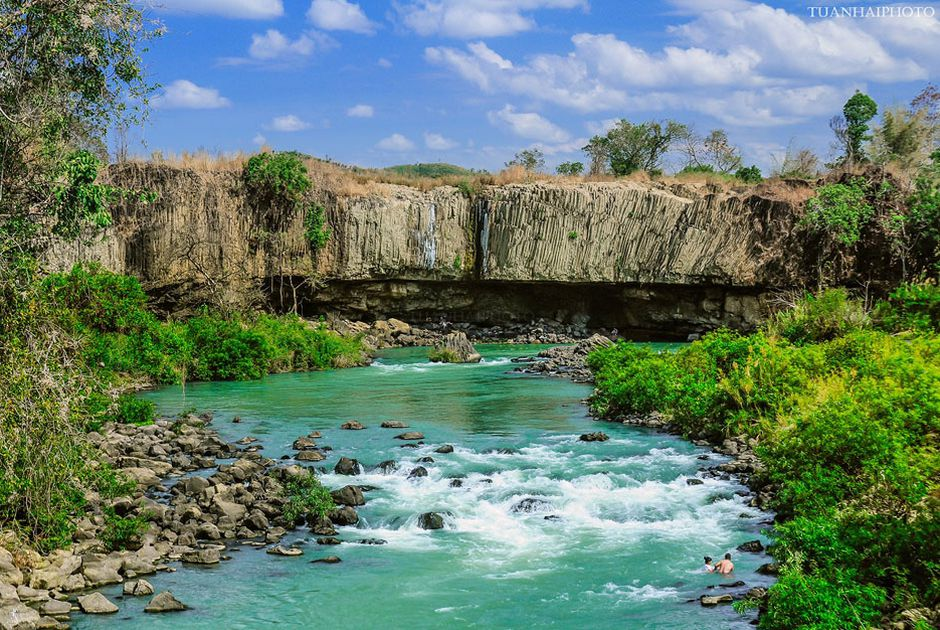 |
| Photo: Yeudulich |
Srepok River (Dak Krong River) is the second largest river in Central Highlands of Vietnam, with a length of 406 kilometers (125 kilometers in Vietnamese territory) and a basin of 30,100 square kilometers. As a major tributary of Mekong River, Srepok comprises two tributaries, Krong No and Krong Ana, which means “father river” and “mother river” in the local language. As a legend told by the residents on the two sides of the river, this river is associated with a love story of a boy and a girl whose love was prevented by their clans.
In contrast to the two gentle tributaries, Srepok River seems to be more violent, which makes this river a paradise of magnificent waterfalls. Many of these majestic waterfalls have been exploited for tourism such as Dray Nur, Dray Sap, Gia Long, Seven Branches, and Trinh Nu falls. Not only that, the catchment basin of Srepok River is the home to many kinds of flora and fauna, some of which are endangered species in the world.
Following the course of Srepok River, there are two national parks that are worth visiting: Chu Yang Sin and Yok Don National Park. The best time to visit Srepok River is from November to April, in the dry season, when the heavy rain that interrupts your journey has not come.
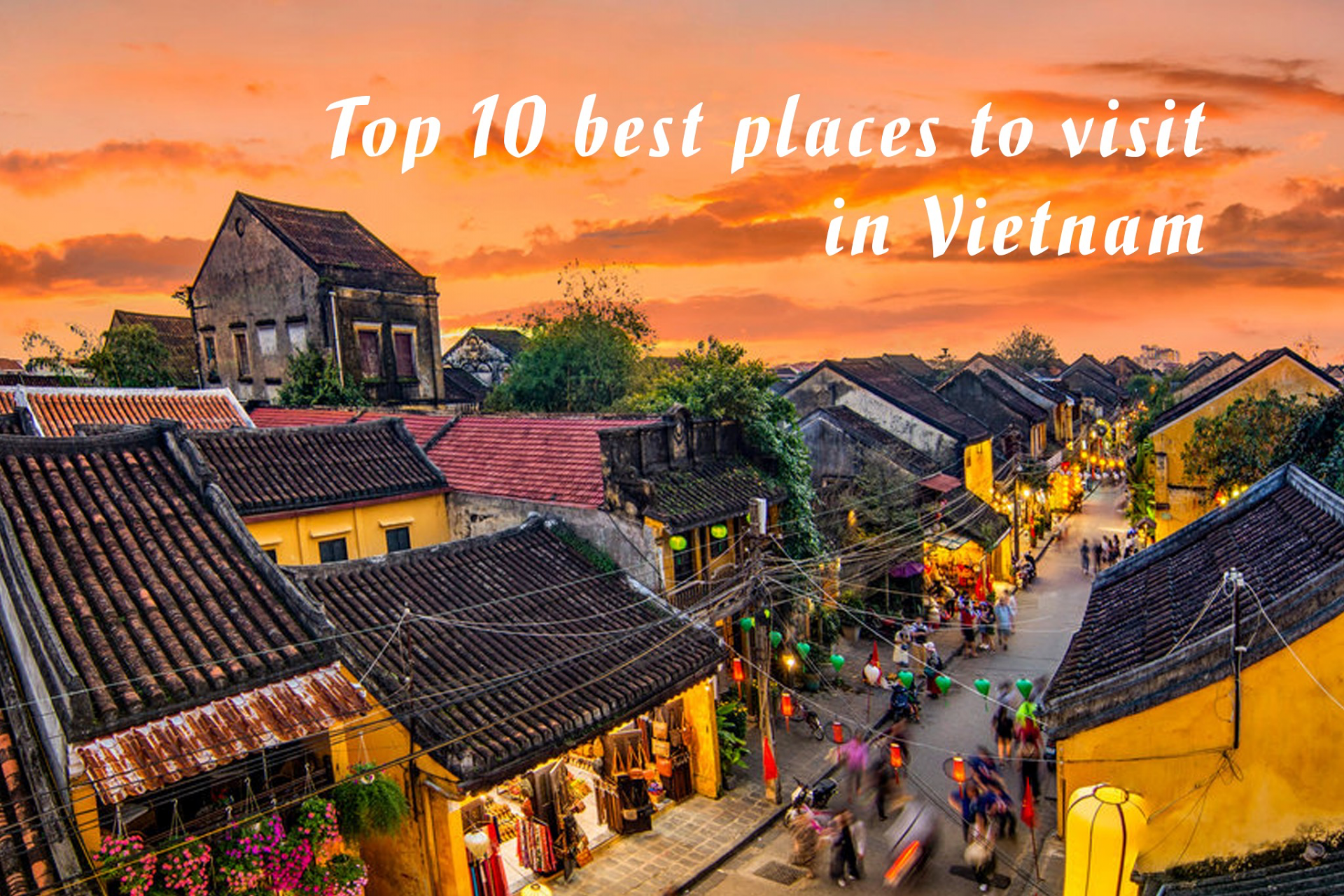 | Top 10 Best Places to Visit in Vietnam - Video You want to visit Vietnam, but you have no idea where to see first. Then, this article will help you. Take a look at the ... |
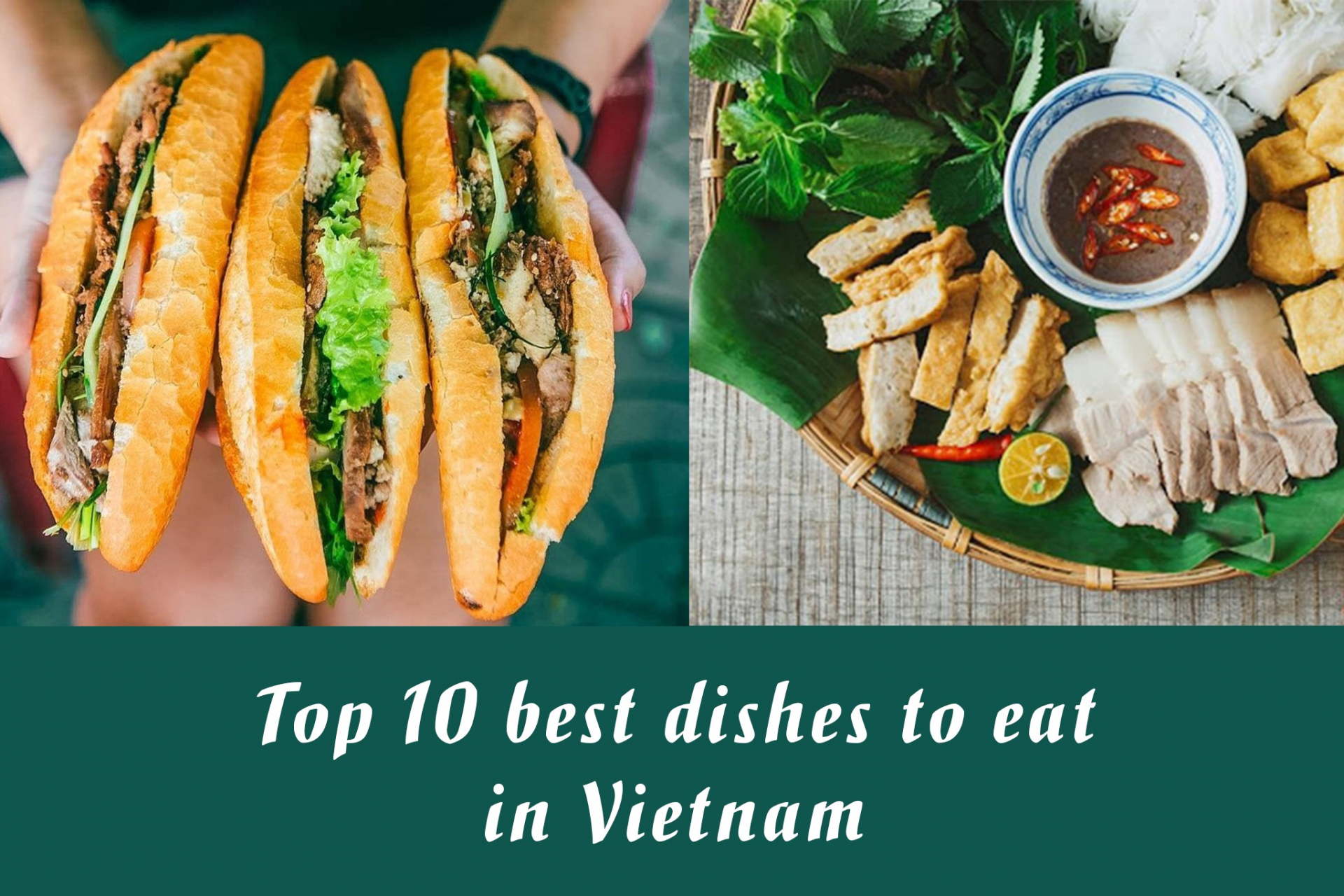 | Top 10 Best Dishes in Vietnam - Video When talking Vietnamese cuisine abroad, people mention phở and bánh mì, however, the full spectrum of Vietnamese food is a symphony of delightfully textured, bright ... |
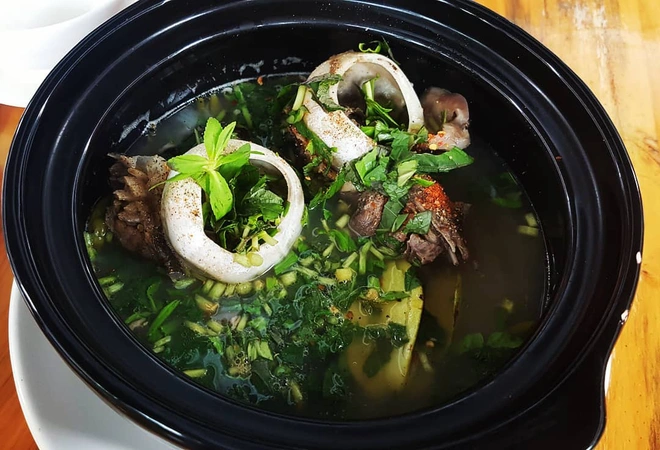 | Top 4 Unique, Must-try Seafood Dishes in Vietnam Vietnam has thousands of kilometres of beaches with many islands, and each region has its own specialties that attract tourists from all over the world |
Recommended
 Travel
Travel
International Arrivals to Vietnam Hit New Record in 2025, up Over 20%
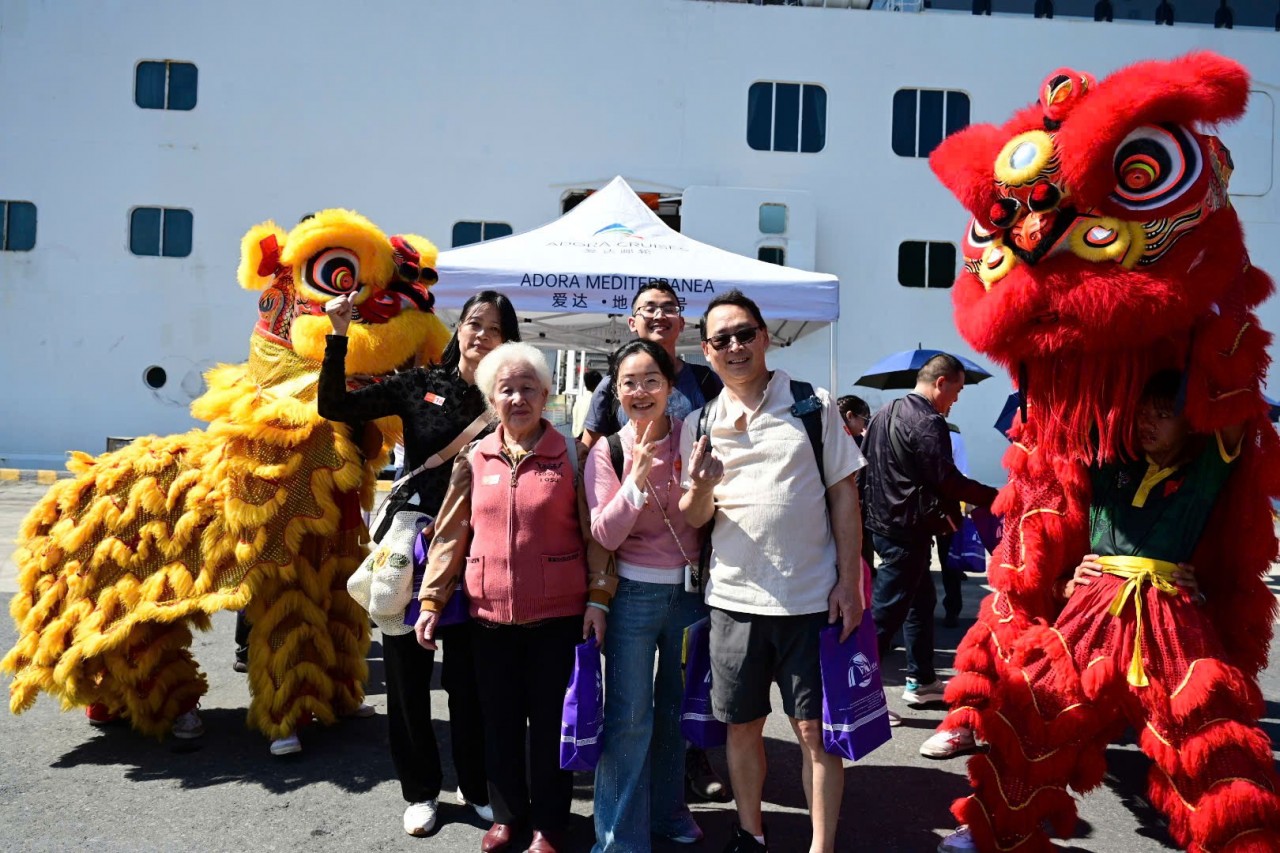 Travel
Travel
New Year’s Day 2026: Vietnam’s Tourism Makes Impressive Start with 3.5 Million Visitors
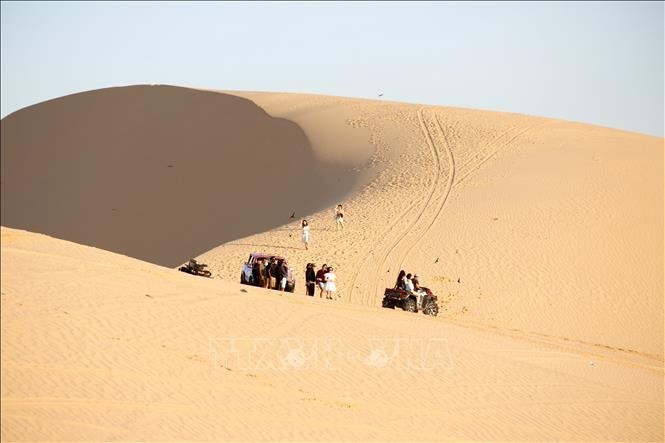 Travel
Travel
Vibrant Destinations for New Year 2026 Holiday
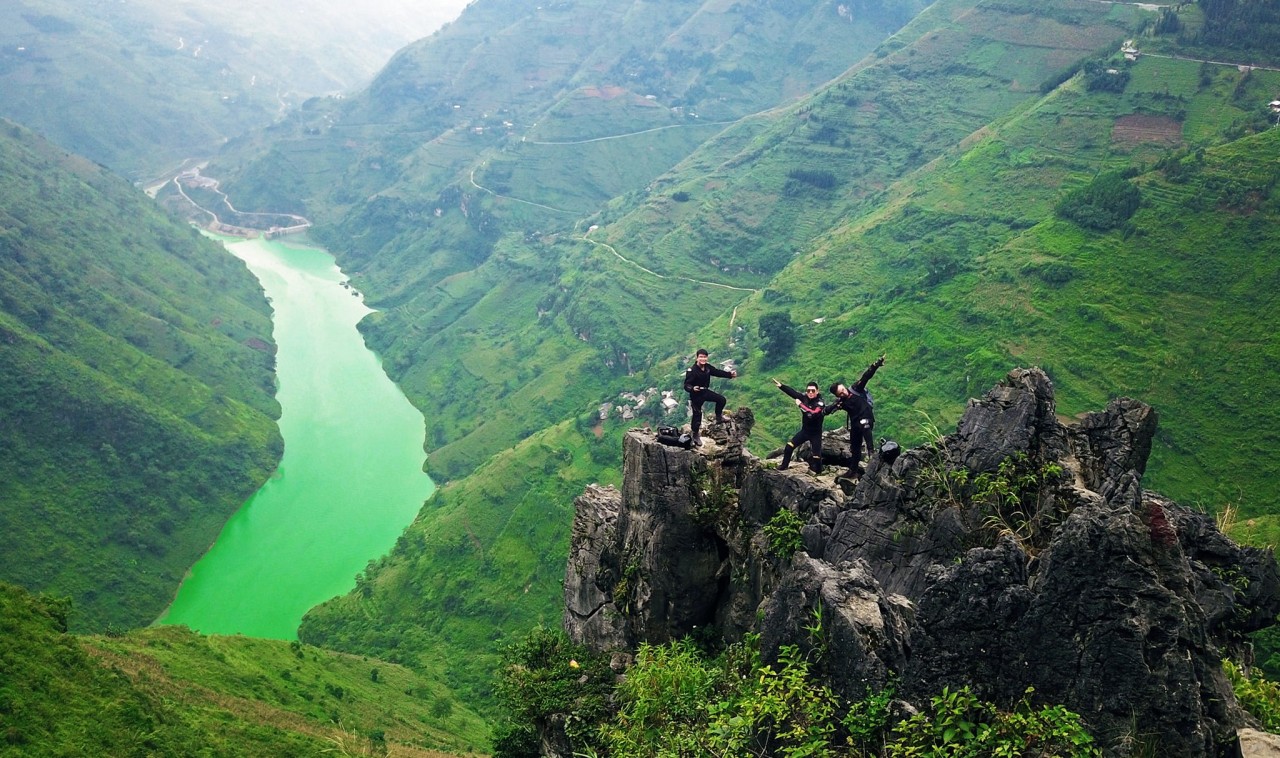 Travel
Travel
Tourism Industry: 2025's Bright Spot of Economic and Social Growth
Popular article
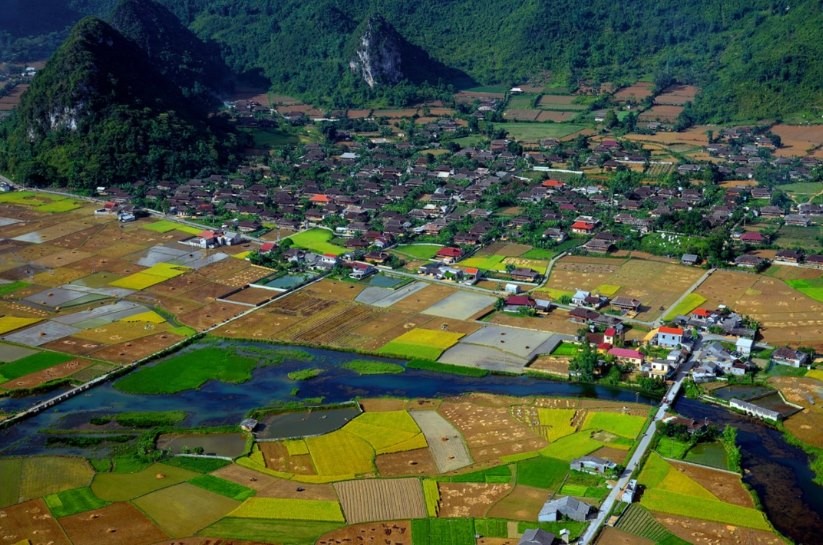 Travel
Travel
GMS International Conference with Focus on Sustainable Tourism Development
 Travel
Travel
Visitors to Explore Ancient Conifer Forest at Phong Nha-Ke Bang for First Time
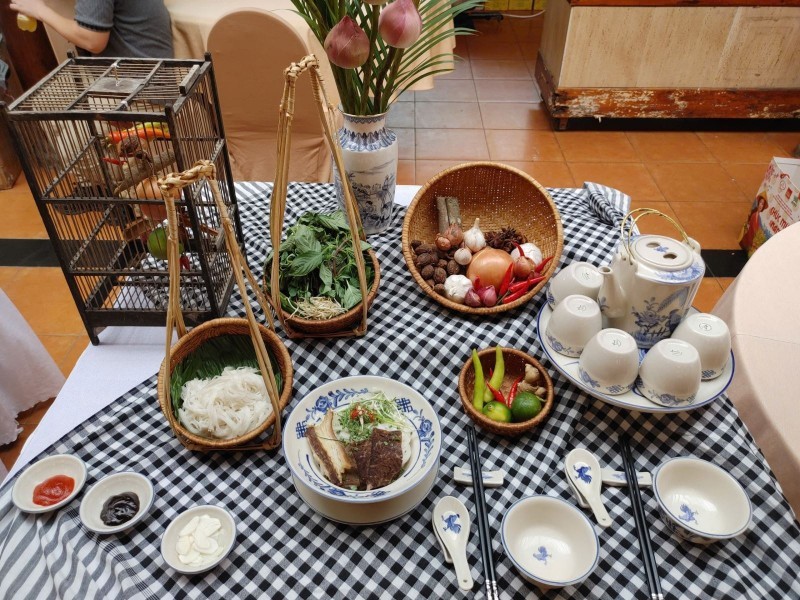 Travel
Travel
“Vietnam Pho Festival 2025” Kicks Off in Singapore
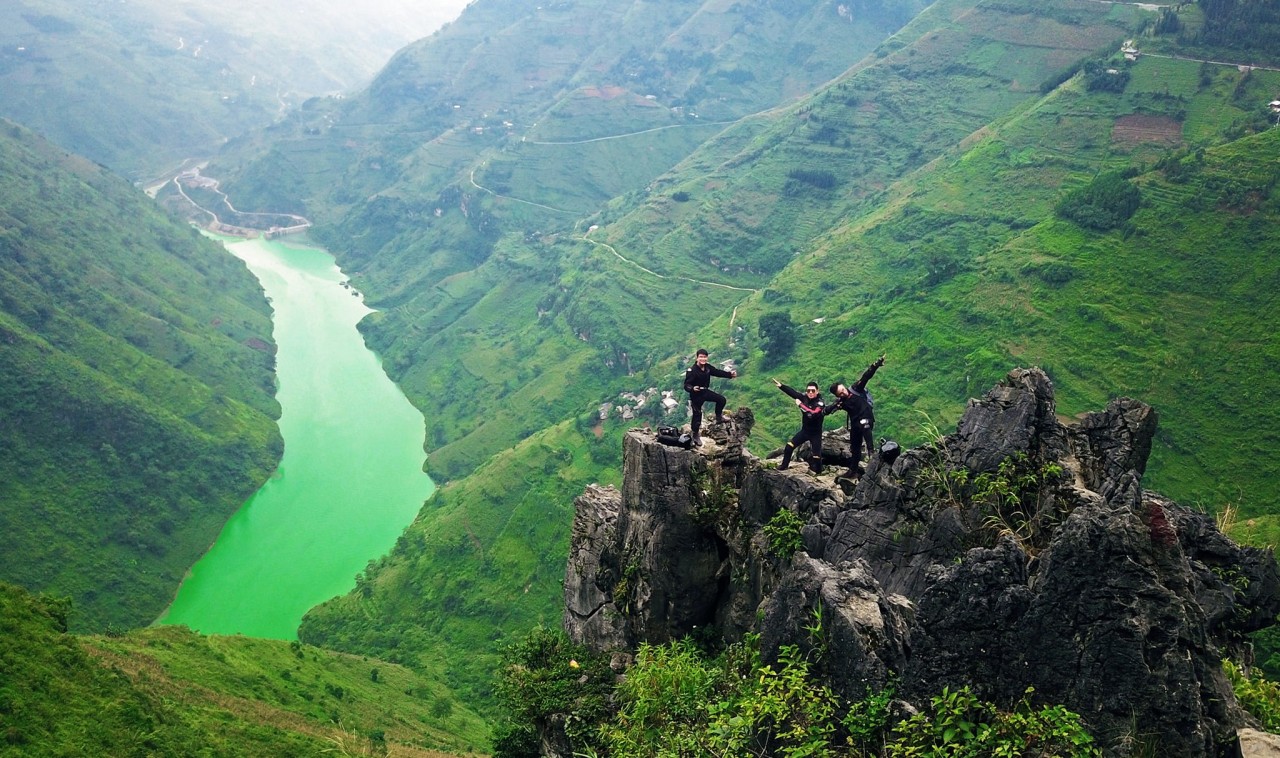 Travel
Travel


